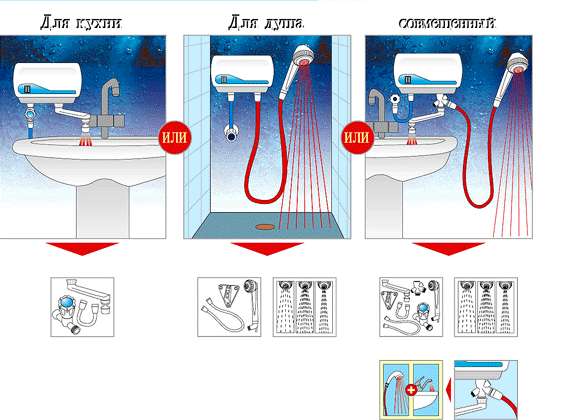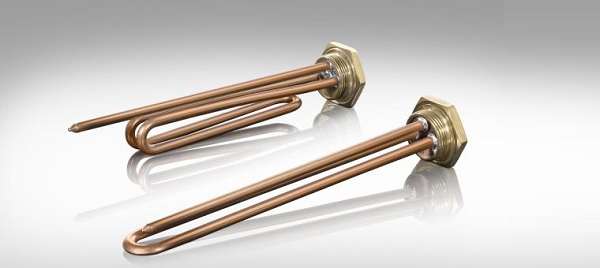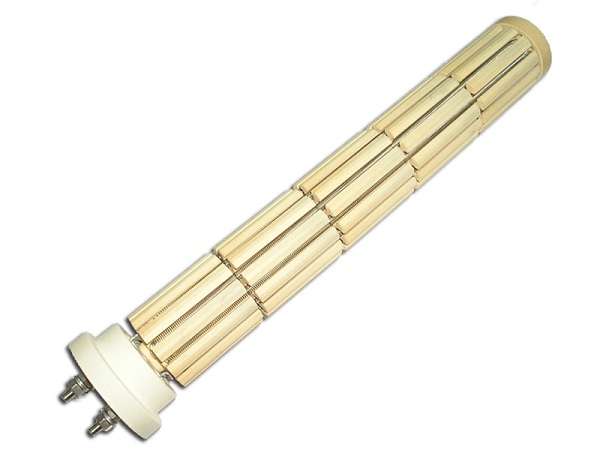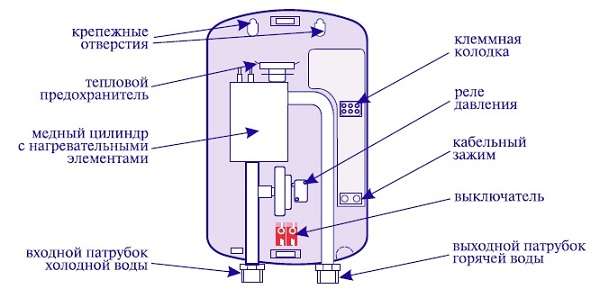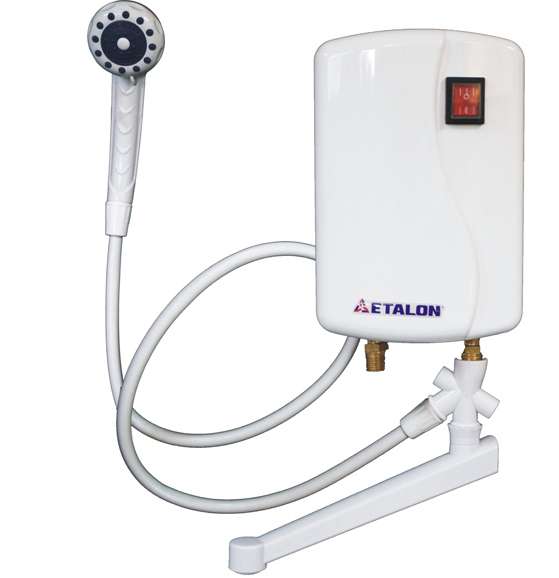Switching on the device
Before connecting the instantaneous water heater to the network, it is required to check:
- fastening strength;
- electrical connections;
- tightness of connections;
- water pressure.
To use an instantaneous electric water heater, you need to pass water through the entire system.
A trial run involves the following actions:
- Shut off the hot water supply.
- Open the valves on the water heater.
- Fill it with water.
- Select power.
- Turn on the water supply and wait for it to heat up.
- Make sure there are no leaks. After that, turn off the device and turn off the water.
How to properly install a tankless water heater with your own hands is described in detail in the instructions. The device solves the problem of the temporary lack of hot water and makes it possible not to disturb the usual comfort.
https://youtube.com/watch?v=UfLR5NG5Co8
Not every house or even an apartment can be connected to a central hot water supply system, so homeowners need to install various devices that ensure the constant availability of hot water in the house. An excellent choice for this is the installation of an instantaneous water heater, which acts as a high-quality, reliable and durable equipment that heats water as it enters plumbing fixtures. These devices are presented on the market in many forms, differing in power, appearance, size, cost and other parameters.
It is important to choose the right product, as well as to know how to connect the instantaneous water heater to the main plumbing fixtures at home. It is not difficult to complete all the processes, so it is allowed to implement them yourself
A flow heater should be distinguished from a storage heater, as they are connected to the power supply system in different ways.
Nuances of operation
Flow-type water heaters attract many consumers because they have no restrictions on the use of hot water volume, it is especially convenient to install it in a shower stall - take water procedures as much as you like.
Not everyone knows that the installation of such a device requires responsibility, because the product belongs to high-power devices, it requires the obligatory laying of a separate connection line. Installation of the line and connection of the product can only be carried out by specialists; with self-installation, you can de-energize not only your apartment, but also an apartment building.
In order for the instantaneous water heater to serve for a long time and not upset you with frequent breakdowns, you must strictly follow the manufacturer's recommendations and pay attention to such points:
- installation of the product should be done near the place of use to reduce heat loss;
- if there is very hard water in your area, install special protective filters to protect internal parts from scale;
- in no case do not install the product in an unheated cottage;
- in the bathroom, position the device in such a way that splashes cannot get on the body;
- at low pressure, use the product at an average temperature - otherwise the automation simply will not turn on.
Please follow the steps below carefully before starting for the first time.
Check the presence of water in the home plumbing and the level of its pressure - it should be sufficient. With a weak pressure, you will have to abandon use until better times.
With low heating of the water flow, set the required temperature using the buttons on the control panel.
After taking a shower, the tap must be closed, the product must be disconnected from the mains.
Remember! In many models of instantaneous water heaters, the settings made are saved, so the next time you turn on the device, it will give you the water temperature you set.
Before you go to the store for a long-awaited purchase, check the quality of the wiring in the house: old houses are designed for only 3 kW / h per apartment, so you will have to change all the wiring to the electrical distribution panel to connect. Users who live in new high-rise buildings, and even with electric stoves, are lucky: here the tolerance for an apartment is higher and starts from 10 kW / h, but this does not mean that you can turn on several electrical appliances at once.
In conclusion, a few words about the domestic electric instantaneous water heater Etalon Copper 350 of the combined type: a faucet and a shower hose with a nozzle. The weight of the structure is only 2 kg, dimensions - 240x160x95, power up to 3.5 kW, maximum heating temperature of the water flow - 650C, productivity - 3.5 l / m. According to its characteristics, it is not inferior to foreign counterparts and is inexpensive - 2440 rubles, and in case of replacement it will be much easier to find components.
Simple connection of pressureless heater
For example, consider connecting to a shower stall. Let's say hot water was turned off in the apartment, but you urgently need to buy up:
- the shower head is unscrewed from the hose and screwed to the cold water inlet of the instantaneous heater;
- to use the water heater, the mixer handle is switched to the “shower” position;
- to use cold water past the heater, the mixer handle is moved to the “faucet” position.
After the appearance of a centralized hot water supply, the non-pressure water heater is disconnected, and the watering can is wound onto the mixer hose of the shower stall.
The correct wiring diagram is shown on the left. An incorrect connection is shown on the right. In the scheme, there is a tap on the hot water outlet pipe from a non-pressure water heater. Shut-off valves in front of the shower head must not be installed.
Correct connection of the pressure heater
A pressure water heater is inserted near the riser. If the plumbing allows, it is easier to connect with a tee at the outlet where the washing machine is connected. In any case, a ball valve is embedded near the riser of the centralized hot water supply. During the use of the water heater, the shut-off valves are transferred to the “closed” position. Additionally, the taps are inserted near the cold water riser, as well as on the inlet and outlet pipes of the flow heater.
To connect the device from the tap on the water supply, unscrew the hose of the washing machine along with the tap. A bronze tee is screwed onto the branch thread. A tap is screwed into the side outlet, and a washing machine hose is connected to it. A fitting is screwed to the second outlet of the tee, a piece of metal-plastic pipe is fixed and it is brought to the cold water inlet tap on the water heater.
Installation of instantaneous water heater
How to install an instantaneous water heater depends on how many water intake points the unit is supposed to be used for. Depending on this, the power and performance of the water heater are also selected.
The easiest way is to mount the model on one crane. So, it often becomes necessary to find out how to install a flow heater in the bathroom of residents of city houses with central hot water supply with frequent hot water outages. In this case, a low-power and cheaper device may be sufficient.
In private homes, where the heater is the only heating method, more complex branching schemes are more often implemented (at least for a tap in the kitchen and a bath or shower). Such schemes require more powerful and expensive equipment. Installation in this case has its own characteristics.For example, the location for installing the heater should be chosen so that it is approximately equidistant from all points of water consumption.
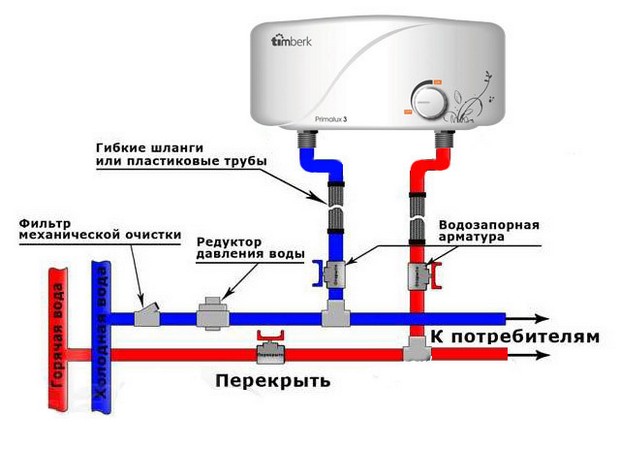
Installation is carried out in the following sequence:
- Installation of tees on pipelines of hot and cold water for tapping equipment.
- Installation of ball valves on tees to be able to shut off the water supply if necessary. Particularly when using a heater as an alternative, turning off the tap on the hot line makes it possible to use hot water from a centralized line.
- The tees on the pipelines are connected to the corresponding branch pipes of the water heater using flexible hoses. If the equipment is located far from the tie-in points, pipes (polypropylene, metal-plastic, steel - depending on the type of existing pipeline) can also be used.
Plus, when installing a flowing electric heater with your own hands, it is recommended to use an ion exchange filter, and if necessary, a mechanical one to protect the ion exchanger from rapid contamination. This is due to the intense deposition of salts on the equipment during the rapid heating of water in a flow heater.
Design and features
The device of a flowing water heater is not particularly difficult. Here, a single scheme is used for all models: cold water passes through the body of the product, where the heating element gives it its heat. The user just opened the tap - inside the device, the relay responsible for the pressure is instantly activated, within a few seconds the water is heated to the desired temperature (depending on the power of the heating element), which is set manually.
Inside, the instantaneous water heater is equipped with a special breaker that immediately turns off the power if the water temperature rises sharply and becomes much higher than the critical level. From possible pressure drops inside the water supply system, which can happen at any moment, the product is reliably protected by a built-in stabilizer.
Water heaters of this type have differences in the type of heater and control system.
Types of heaters
As the main component of the design of all electrical appliances, the heater is usually produced in the form of a spiral or heating element. In products with an uninsulated spiral, it is placed in a special block of plastic tubes located inside a case made of very durable plastic. When such a device is connected to the network, the spirals are heated, and the passing stream of water takes away this heat. Due to the small volume of water in the tank and the low weight of the entire device, there is no residual heat after shutdown, so scale does not form. These products are used for heating pool water, in everyday life they should be used in regions with very hard water.
Closed heating elements work on the same principle, heating the flow of water passing through them, but their spiral is enclosed in a copper or brass case, therefore, in the fire-fighting sense, they are much more reliable than the first option.
Control system
Flow type water heaters can be divided according to the type of control they have.
Hydraulic - this type is less accurate, it has 6 power levels, switching is done manually using a switch.
Electronic type - the thermostat controls the heating on its own, users only set the temperature acceptable to them. This type of control is considered very convenient.
When using the mechanical control option, a hydraulic unit with a membrane is located inside the product, which turns the device on or off depending on the water pressure.
The disadvantage of this control is the fact that with a small pressure in the water supply, the heating element will not turn on.
Electronics controls the entire process using a microprocessor, and special sensors help it provide any temperature, regardless of pressure, it also sets the optimal power, significantly reducing electrical energy consumption.
How to connect flow EWH
Installation of instantaneous water heater can be divided into three stages:
- Install the device on the wall;
- Calculation of power supply and its connection;
- Connecting the system to risers.
For installation, you will need tools (photo 3) and materials:
- drill, concrete drills;
- hammer;
- screwdriver;
- gas key;
- open-end wrench;
- pliers;
- metal-plastic pipe and a tee to it;
- faucet and valve;
- fum-tape or tow for sealing the threaded connection;
- Euro socket with grounding contact.
So let's get to work:
- Typically, an electric water heater is mounted on the wall as close as possible to the faucet in the kitchen or bathroom to reduce heat loss. It is advisable to install the heater above the highest point where water flows out (photo 2). Using a bracket and fixing screws, the heater is fixed to the wall. The small size and weight of the EWH allow you to do all the fastening operations with your own hands.
- The electrical connection is the main point of the entire installation. We start with the power of the device indicated on its back wall. Let, for example, it is equal to 6 kW. We use the power formula: P \u003d I * U (power \u003d current * voltage). At a voltage of 220 V, the current consumed by the water heater is: I \u003d P / U, 6000 / 220 \u003d 27.3 A, while standard sockets can withstand up to 16 A. This means that you need a separate line from the shield on the landing and a circuit breaker for our device. We calculate the cross section of the wires of the additional cable using the ratio: a copper wire with a cross section of 1 mm² is designed for 10 A. The calculation for our example gives a cross section: 27.3 / 10 = 2.73 mm². After rounding, we get 3 mm². We choose a standard PVA cable (3x4) with three cores. The cross section of each core is 4 mm². Connecting the cable to the EWH and the shield with your own hands does not cause problems: a wire in a white braid - to phase (L or F), in a blue braid - to zero (N), yellow-green wire - ground (photo 4).
Connection to the water supply system is carried out in two ways:
- Stationary method: provides hot water to the bathroom and the kitchen at the time of turning off the central hot water supply (DHW) or its absence. EWH is connected to the water supply system using 2 tees (cut into pipes of cold and hot water), 2 valves and metal-plastic pipes. After such a simple installation, we check the tightness of the system with our own hands (we open the mixer and taps, including in front of the EWH), then we close the hot water riser and apply voltage. Note that the EWH must be equipped with a safety check valve that regulates the pressure in the system and prevents water from draining back into the central pipe. When the EWH is turned on, taps “1”, “3”, “4” are open, tap “2” is closed.
- The water heater is not used: taps “1”, “2” are open, “3”, “4” are closed (scheme in photo 5); temporary connection involves the use of only a shower hose (attached in the kit), which is connected to the outlet of the heated water EWH.
So, a small amount of information and basic knowledge of tools allow you to understand the operation of the EWH, calculate it and do some of the work yourself.
Advantages and disadvantages
Today, many users, having tried storage water heaters, are inclined to purchase a flow-through option - this saves a lot of room space, since they are all quite compact in size, and reduces the heating time many times over.
For example, to warm about 10 liters of water, the storage option will take up to 25 minutes, and if 100 or more, then you will have to wait at least 5 hours.The flow-through dispenses hot water instantly as soon as you turn on the faucet and in the volume that you need.
Let's take a look at the benefits point by point.
Simple operation - turned on, washed or washed dishes and turned off.
They provide an unlimited amount of hot water for any need - it will take no more than 2 minutes to wait for heating.
Does not require periodic maintenance by specialists.
The compact size allows installation of the product even under the sink in the bathroom, so as not to disturb the established interior.
When a large volume of hot water is not required, such devices become quite economical (compared to the storage option).
Their initial price is lower than that of storage water heaters.
When heated, water does not lose its qualities, because it is consumed immediately. There is no possibility of reproduction of harmful bacteria - if desired, you can even drink it.
Minuses:
- this type of product heats water no higher than 400 C;
- with a high power of the product, the power consumption increases;
- when a large amount of water is required, the device works for a long time and the electric meter will wind up a decent flow;
- this type of product imposes special requirements on the home electrical network - the voltage must always be a constant value;
- instantaneous water heaters provide only one point of water intake.
You can purchase an instantaneous water heater to provide multiple points, but its cost will be much more expensive.
The conclusion from everything is simple: water heaters of the type described above are convenient for a family of two, when the need for hot water is minimal, otherwise it is best to install a storage-type boiler with a large volume that satisfies all household needs.
Types of water heaters
According to the type of energy used, water heaters are divided into gas and electric.
The first option is more economical, but the installation of such models, as in all cases of installation of gas equipment, should be carried out by specialists with permits. That is why the connection of electrical models will be considered in detail below, in this case it is allowed to install a boiler with your own hands.
According to the principle of operation, units for heating water can be accumulative or flowing.
-
Accumulative models are more bulky due to the presence of a volumetric tank, but they are characterized by low power. Water is poured into it, the temperature of which is raised with the help of a heating element. The disadvantage of such heaters can be considered the lack of speed. The heating rate depends on the volume of the tank, as well as on the power of the installed heating element, but in any case, it will take time to get the required temperature. Many models of this type have the function of automatic temperature control and, when the water cools, turn on the heating element, restoring the parameter to the required value. Such designs are optimal when hot water is consumed constantly and in large quantities, for example, in houses where large families live.
-
When using an instantaneous water heater, hot water can be obtained immediately by opening the tap. Such models take up little space and carry out almost instantaneous heating of the liquid passing through them. The features of models of this type include the presence of restrictions on the maximum temperature and a fairly high power consumption.
Tools and materials for installation
Installation work consists of three stages:
- fastening a flowing electrical appliance to a wall or sink;
- connection to the water supply;
- connection to the electrical network.
Taking into account the specifics of each stage of installation work, the necessary tools and materials are selected:
- Flowing water heaters, to which several water points are connected, are mounted on the wall.For installation, you will need an electric impact drill, a set of drills, a screwdriver, a hammer, a level. Dowels and screws usually come with the product.
- Flowing electrical appliances are characterized by high power and require a separate line to be supplied. Of the materials you will need a three-core copper cable with a cross section of at least 2.5 mm 2, RCD, electrical tape. Of the tools, a screwdriver, pliers, a tester, a wall chaser for grooving are useful in case of laying a new wiring line.
- The connection to the water supply is carried out with a metal-plastic pipe or a flexible hose. The sealing of the threaded connection is carried out with tow or fum tape. From the tool, you must have an adjustable and a set of open-end wrenches, scissors for cutting a metal-plastic pipe, a screwdriver, pliers.
All materials and tools are prepared in advance so that they are at hand.
Advantages and disadvantages of various types
The storage water heater is a volumetric tank that accumulates a supply of water with mounted heating elements and a simple control circuit with a thermostatic head and a thermal relay.
Its main advantage is unpretentiousness and durability. There is always a supply of water already heated to a temperature of 55-75 degrees. Electricity consumption is moderate and still the optimal power of a household water heater ranges from 1.5-3.5 kW, commensurate with other powerful household equipment.
Instantaneous water heaters are good for their compact size. They are installed in any convenient place near the water supply. The heater has time to warm up the water flow without preparation, so that the consumer will not be limited by a fixed volume. Ideal for occasional use, for example, if the centralized DHW system fails or is turned off for maintenance, it is enough to switch to an instantaneous water heater and continue to pour hot water at a comfortable temperature.
The second aspect is the limitation of pressure for normal water heating. Any flow type heater at a given normal pressure and head is able to raise the water temperature by a certain number of degrees, for example, by 25 ° C. In summer, at a cold water temperature of 15°C, adding another 25°C gives quite comfortable warm water of +40°C.
If it comes to the winter period, when cold water is a maximum of +5, then even with the maximum load on the heater, the output will not be at all comfortable 30 ° C. You will have to reduce the pressure and be content with a smaller jet in the sink or shower.
Installation of instantaneous water heater
In general, the connection diagram for an instantaneous water heater is similar to the connection diagram for a storage water heater, although it has several significant differences.
Electrical connection
Despite the fact that the connection of the device to the mains is performed last, we will talk about it at the very beginning. Unlike storage devices that can be connected to a common electrical network, instantaneous water heaters require a separate line with a circuit breaker. In this regard, most appliances are not even equipped with an electrical plug. So if such a line is not drawn to the installation site, it should be laid before starting work on the installation of the device.
The instantaneous water heater must be grounded.
wall mount
Since instantaneous water heaters are significantly smaller than storage water heaters and have a lower weight, they can be hung on any wall, not even a load-bearing one. When installing them, it is not necessary to use powerful anchors, but it will be enough to get by with ordinary dowel-nails with special tips.
Water connection
Connecting an instantaneous water heater to the water supply is carried out in the same way as connecting a storage water heater. A pressure reducer, as well as a safety valve, will not be needed in this case.
After connecting to the water supply, the entire system must be tested for leaks. This is done in the same way as in the case of the storage heater, but the hot water tap is not closed during the test.
In conclusion, we say that it is categorically not recommended to use a flowing water heater with low pressure, since this threatens to overheat the heaters and cause the device to fail or even more serious consequences.
Let's start with the classification of water heaters
According to the source of energy used:
- electrical;
- gas type (connected to the gas main);
- on solid or liquid fuel (coal, firewood, peat, diesel fuel);
- indirect heating (use the energy of other heat sources, such as central heating systems, heating boilers).
Water heating method:
- cumulative. They work on the principle of an electric kettle: a tubular electric heater is installed in a container with a certain volume of cold water - a heating element, which heats the water to a selected temperature (30-40 ° C) for a certain period of time and turns off. When the water cools down by 0.5-1°C, the automation again turns on the heating element and heats the water;
- flowing (“flowing”). Instantaneously heat a small volume of water passing through a pipe with a heating element. Opened the faucet of the water supply system - the device turns on, hot water went through the plumbing. Close the tap - the heating element turns off.
Which water heater to choose: by type and power
There are many options for supplying housing with hot water with your own hands. Let's dwell on one of them: the house is provided with hot water (DHW), but sometimes, for a short period, it can be turned off. Then the best option would be to install a flowing electric water heater (EVN). Compactness and speed of water heating are the main arguments in its favor. But these advantages of an instantaneous water heater are given for a reason, but due to the high power of the device and the creation of an additional load (albeit short-term) on the power grid. You can calculate the required power of the water heater according to the following approximate scheme:
| Purpose of use | Sink | hand washing | Taking a shower | Taking a bath |
| Temperature °C | 45 — 55 | 35 — 36 | 37 — 40 | 37 — 40 |
| Water consumption, (l/min) | 3 — 5 | 2 — 4 | 4 — 8 | 8 — 10 |
Power calculation is made according to the formula: P = G*Δt / 14.3, where
P is the heater power, kW;
G - water flow, l / min;
Δt is the increase in water temperature, °C; Δt = T-tin, T is outlet temperature, tin is inlet temperature.
Even with the minimum “handwashing” mode (Δt, let's take 35 - 10 = 25), we need power: P = 2 * 25 / 14.3 = 3.5 kW. Note that in houses with electric stoves, the permissible total load power on the wiring is 6-8 kW, and in Khrushchev houses - 3.5 kW. Therefore, in order not to knock out traffic jams, when choosing a “flow” with a power greater than that allowed for your electrical wiring, take care of a separate electrical cable and the need to install an additional circuit breaker.
So, after a small portion of the theory, you can already independently choose a flowing water heater (photo 1). Most of them are wall-mounted and are equipped with nozzles for the faucet, kitchen, shower. If low-power flow-through EWHs (2.5-3.5 kW) are used, then you can connect them yourself through a regular outlet. The approximate performance of the EWH (l / min) will be as follows:
summer period with inlet water temperature tin = +15°C;
| Outlet water temperature, °C | EWH power, kW | |||
| 3 | 4 | 5 | 6 | |
| 30 | 2,7 | 3,7 | 4,6 | 5,5 |
| 40 | 1,6 | 2,2 | 2,7 | 3,3 |
| 50 | 1,2 | 1,6 | 2,0 | 2,3 |
winter period with inlet water temperature tin = +5°C.
| Outlet water temperature, °C | EWH power, kW | |||
| 3 | 4 | 5 | 6 | |
| 30 | 1,6 | 2,2 | 2,7 | 3,3 |
| 40 | 1,2 | 1,6 | 2,0 | 2,3 |
| 50 | 0,9 | 1,2 | 1,5 | 1,8 |
Yes, a trickle of water is thin. But washing hands, rinsing or washing dishes (not at the same time) is quite realistic without a separate electrical cable from the shield on the landing and installing additional electrical protection.
With year-round and, moreover, simultaneous use of several points of water intake, a power of 3-6 kW will no longer be enough for a flow-through EWH.And then you will have to install a more powerful device (7-15 kW), which will require a separate cable and circuit breaker.
